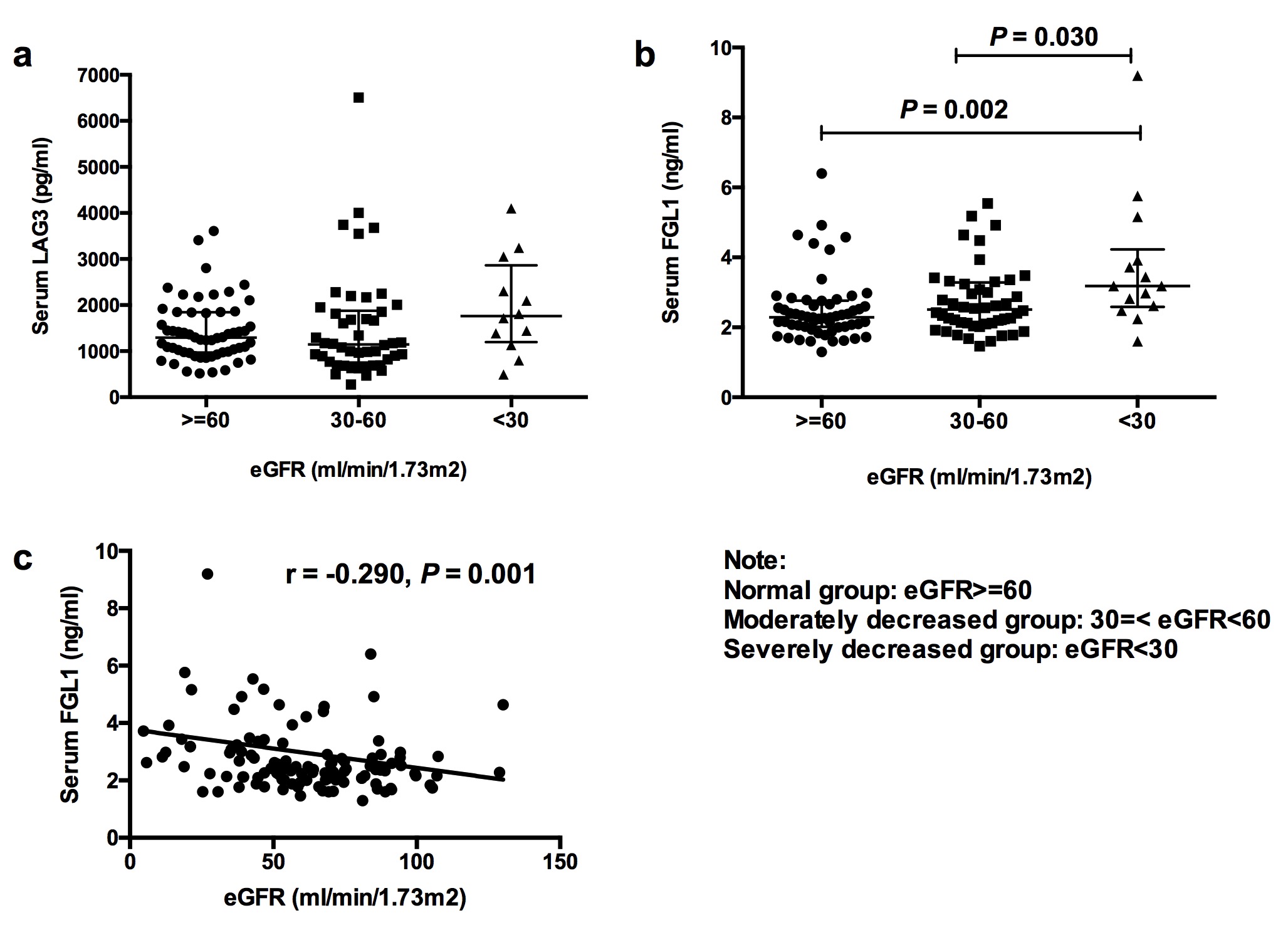Two Pilot Studies Exploring the Diagnostic and Predictive Potential of Serum LAG3 and FGL1 in Kidney Transplant Recipients
1Department of Laboratory Medicine, West China Hospital, Chengdu, China, 2Department of Nephrology, West China Hospital, Chengdu, China
Meeting: 2020 American Transplant Congress
Abstract number: D-258
Keywords: Co-stimulation, Kidney transplantation, Non-invasive diagnosis, Renal dysfunction
Session Information
Session Name: Poster Session D: Biomarkers, Immune Assessment and Clinical Outcomes
Session Type: Poster Session
Date: Saturday, May 30, 2020
Session Time: 3:15pm-4:00pm
 Presentation Time: 3:30pm-4:00pm
Presentation Time: 3:30pm-4:00pm
Location: Virtual
*Purpose: Lymphocyte activation gene 3 (LAG3), an immune checkpoint, plays an important role in the negative regulation of immune response and the induction of immune tolerance. Fibrinogen-like protein 1 (FGL1) was recently identified as a new ligand for LAG3 to suppress T cell responses. However, their roles in kidney transplant recipients (KTRs) are unclear now. In this study, we conducted two pilot studies to investigate the diagnostic and predictive potential of serum LAG3 and FGL1 in identifying and predicting renal dysfunction in KTRs.
*Methods: Post-transplant serum samples were cross-sectionally collected from 121 KTRs (58 with normal, 49 with moderately decreased and 14 with severely decreased renal function). Pre-transplant serum samples were obtained from another cohort of 47 KTRs (34 with stable allograft and 13 with dysfunction within first 12 months after KT). Among 121 KTRs, 54 recipients were further divided into glomerular minor lesion (n=21), chronic antibody-mediated rejection (n=25) and IgA nephropathy (n=8) groups based on allograft pathological results. Serum levels of LAG3 and FGL1 were determined by ELISA.
*Results: KTRs with severely decreased renal function showed significantly higher levels of FGL1 than those in normal (P=0.002) and moderately decreased (P=0.030) groups, while LAG3 levels were comparable among three groups (Fig.a-b). Further correlation analysis revealed that estimated glomerular filtration rate (eGFR) was negatively associated with FGL1 (r=-0.290, P=0.001) (Fig.c). No significant difference was observed among three pathological classification groups in terms of both LAG3 and FGL1 levels. In addition, no significant difference was found in KTRs with stable renal function and subsequent allograft dysfunction within 1 year after transplantation regarding pre-transplant levels of LAG3 and FGL1.
*Conclusions: Serum FGL1 negatively correlated with eGFR in KTRs indicating its potential roles in renal allograft dysfunction. However, both LAG3 and FGL1 showed no diagnostic capability in distinguishing different allograft pathological types. Furthermore, pre-transplant levels of LAG3 and FGL1 demonstrated no predictive potential for the subsequent renal allograft dysfunction.
To cite this abstract in AMA style:
Li Y, Yan L, Li Y, Yang C, Wan Z, An Y, Bai Y, Wang L, Shi Y. Two Pilot Studies Exploring the Diagnostic and Predictive Potential of Serum LAG3 and FGL1 in Kidney Transplant Recipients [abstract]. Am J Transplant. 2020; 20 (suppl 3). https://atcmeetingabstracts.com/abstract/two-pilot-studies-exploring-the-diagnostic-and-predictive-potential-of-serum-lag3-and-fgl1-in-kidney-transplant-recipients/. Accessed December 23, 2025.« Back to 2020 American Transplant Congress

